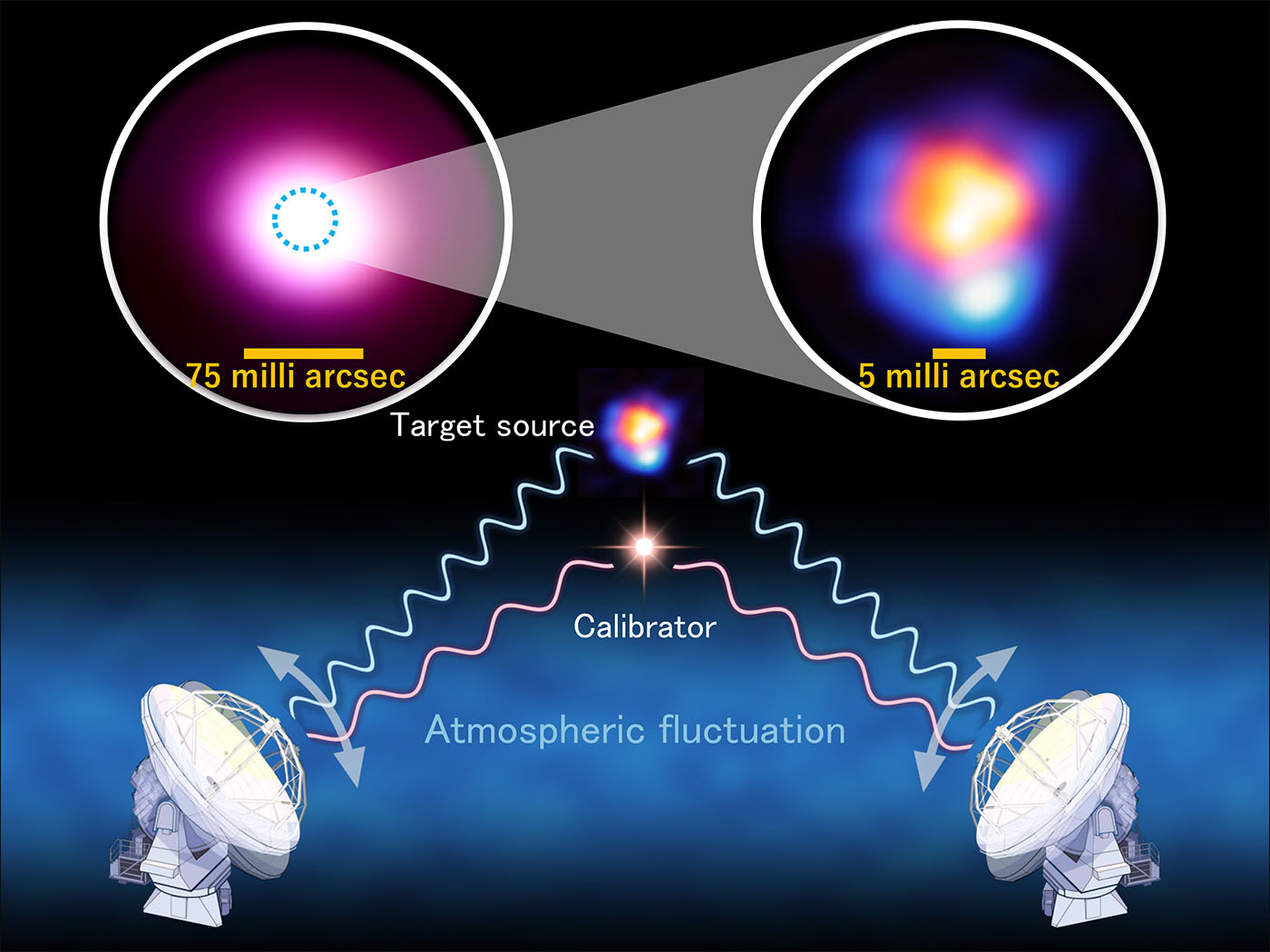
ALMA (Atacama Large Millimeter/submillimeter Array) has demonstrated the highest resolution yet with observations of an old star. The observations show that the star is surrounded by a ring-like structure of gas and that gas from the star is escaping to the surrounding space. Future observations with the newly demonstrated high resolution are expected to elucidate, not only the end of a star's life, but also the beginning, when planets are still forming.
ALMA is a radio interferometric array telescope, in which individual antennas work together to observe a celestial object. ALMA's resolution, the ability to see small details, is determined by the maximum separation between the antennas and the frequency of the observed radio waves. In this research, an international team comprised mainly of astronomers from the Joint ALMA Observatory, National Astronomical Observatory of Japan (NAOJ), National Radio Astronomy Observatory, and European Southern Observatory used ALMA's maximum antenna separation of 16 km and highest frequency receivers (known as Band 10, up to 950 GHz) to achieve the best resolution possible. Pushing ALMA's resolution to new limits also required a new calibration technique to correct for fluctuations in Earth's atmosphere above the antennas. The calibration technique the team used, known as "band-to-band (B2B)," was originally tested in the 1990s at Nobeyama Radio Observatory of NAOJ for future millimeter/submillimeter interferometers.
For their demonstration observations, the team chose R Leporis, a star in the final stage of stellar evolution, located approximately 1,535 light-years away from Earth. The team succeeded in observing R Leporis with the best resolution ever, 5 milli-arcsec, which is the equivalent of being able to see a single human hair two and a half miles away. The observations show the surface of the star and a ring of gas around the star. The team also confirmed that gas from the star is escaping to the surrounding space.
This newly demonstrated high resolution capability can now be applied to young stars with protoplanetary disks where planets are forming. Future high-resolution observations will provide new insights into how planets, particularly Earth-like planets, form.
Detailed Article(s)
ALMA Achieves Highest Resolution Yet --With a combination of ALMA's highest frequency Band 10 receivers and an array configuration with a baseline lenghth of up to 16 km
ALMA
Release Information
Researcher(s) Involved in this Release
- Yoshiharu Asaki (Associate Professor @ National Astronomical Observatory of Japan)
Coordinated Release Organization(s)
- National Astronomical Observatory of Japan
- Joint ALMA Observatory
Paper(s)
- Yoshiharu. Asaki et al. "ALMA High-frequency Long Baseline Campaign in 2021: Highest Angular Resolution Submillimeter Wave Images for the Carbon-rich Star R Lep", in The Astrophysical Journal, DOI: 10.3847/1538-4357/acf619
- Luke T. Maud et al. "ALMA High-frequency Long-baseline Campaign in 2019: Band 9 and 10 In-band and Band-to-band Observations Using ALMA's Longest Baselines" in The Astrophysical Journal Supplement Series, DOI: 10.3847/1538-4365/acd6f1






